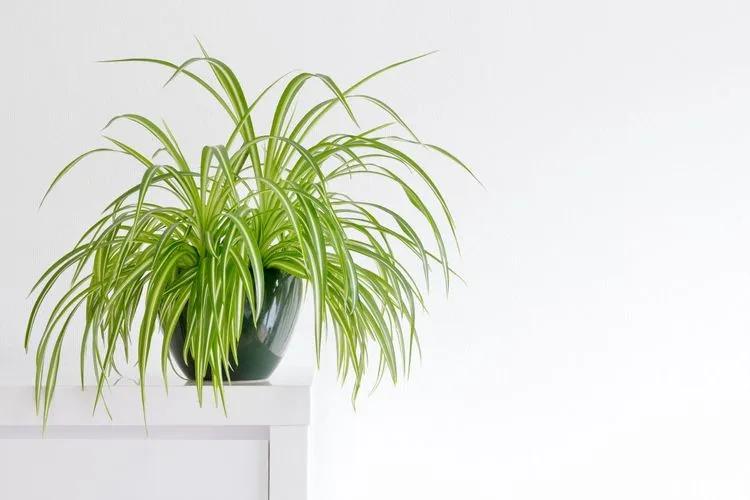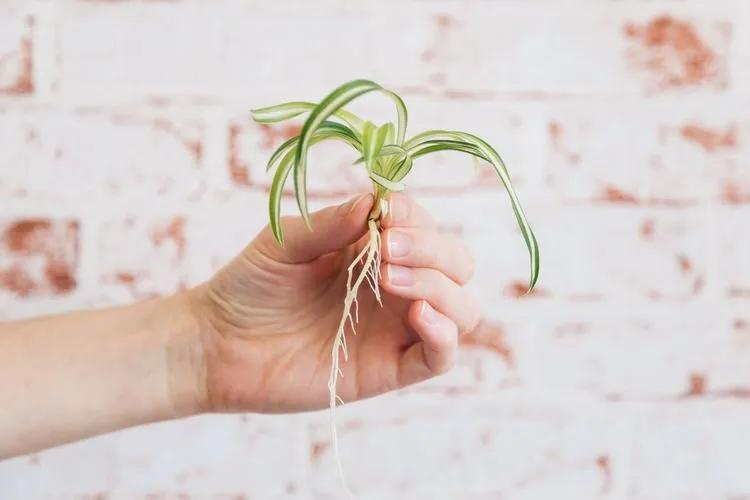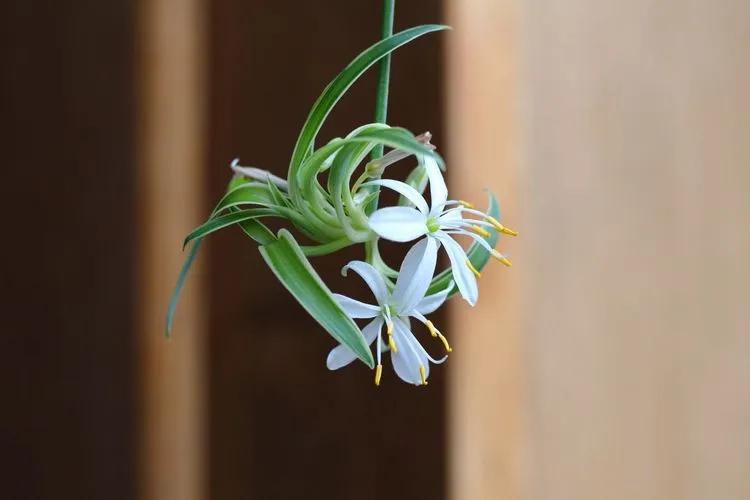Spider plant is one of the most adaptable and easy to grow indoor plants. It is a herbaceous plant with oblong drooping leaves, which are collected in one bunch. These long leaves resemble the paws of the spider, therefore шеи common name. With proper care, leaves with aerial roots form on the stems; these specimens can be transplanted as separate plants. Spider plant is considered an effective air purifier. It absorbs formaldehyde and carbon monoxide. Stay tuned to learn how to care for this undemanding plant.
Watering
 Provide your green pet with abundant watering from March to late autumn and moderate watering during the winter as the plant enters dormancy. Try always to keep the soil slightly moist.
Provide your green pet with abundant watering from March to late autumn and moderate watering during the winter as the plant enters dormancy. Try always to keep the soil slightly moist.
- Use room temperature water.
- Use distilled or purified water if possible.
- Before watering, the top layer of the soil should dry out a bit.
- Water until the water runs out of the drainage holes, and immediately remove the drained water from the tray.
Temperature
In winter, the temperature should be not cooler than 64˚F (18˚C), while in summer do not leave it in the heat of more than 79˚F (26˚C). Chlorophytum also adapts to more extreme temperatures, but this usually affects its appearance and growth.
Light
 Spider plant thrives in light. The best place for this plant is on the south window with a bright but diffused light. However, it adapts to other light conditions easily.
Spider plant thrives in light. The best place for this plant is on the south window with a bright but diffused light. However, it adapts to other light conditions easily.
- Place the spider plant on the east, west, or north windowsill any time of the year.
- Place the plant on the south window during the winter months or at least 30 cm away from the south window in late spring and summer.
- Provide bright fluorescent or another artificial lighting for maximum growth.
- Provide shade for the spider plant if you grow it outdoors.
Fertilizer
Use a complex fertilizer for deciduous and ornamental plants. Feed your pet every two weeks during the active growth period.
Transplantation
Chlorophytum is best transplanted from February to March. There is no need for annual repotting; transplant it as the plant becomes rootbound, approximately once in three years.
Soil
 A suitable soil will be a mixture of sod, deciduous, humus soil, sand. Try not to compact the soil, as the thick root system of chlorophytum grows very quickly at the bottom of the pot and thus leads to the fact that the pot will burst, it needs a little air space in the pot.
A suitable soil will be a mixture of sod, deciduous, humus soil, sand. Try not to compact the soil, as the thick root system of chlorophytum grows very quickly at the bottom of the pot and thus leads to the fact that the pot will burst, it needs a little air space in the pot.
Air humidity
A perfect humidity level for a spider plant is 60% or above. However, it is a plant that can adapt well, so it can survive in a wide range of conditions. If the temperature regime is suitable, then it can grow at a humidity level of even 40%.
Harmful insects and diseases
Spider plants are not prone to attract pests, however, the most common diseases include mealybugs, aphids, and spider mites. To avoid these insects, do not mist the plant regularly as a moist and warm environment encourages their development.
With improper care, rosette can rot. Spots on the leaf plates is another common issue. Variegated forms of the plant may lose the pattern.
Be careful
 Even though most animals seem to have no problem eating spider plants, they are poisonous to cats. However, we still recommend keeping all the pets, including birds, away from eating chlorophytum.
Even though most animals seem to have no problem eating spider plants, they are poisonous to cats. However, we still recommend keeping all the pets, including birds, away from eating chlorophytum.
Other recommendations and facts
-
Spider plants can be planted outdoors in summer or in frost-free climates in containers, as a ground cover in partial shade, or as hanging baskets.
-
Spider plants are great for cleaning the air of tiny particles. They were even grown in space capsules to purify the air.
-
You can divide oversized spider plants by pulling out or cutting the root ball into several pieces, each with several leaves, and replanting them.
-
Spider plants have white tuberous roots that store water and food for the plant.
-
Share your spider plants with friends by pinching off the sprouts and rooting them in a glass of water, or by planting them in moist soil. Keep the soil moist until the rotts appear
-
There are several cultivated color variations of the spider plants. There is a simple green look, and various forms of white or cream, including a stripe pattern in the middle of leaves or around the edges.
